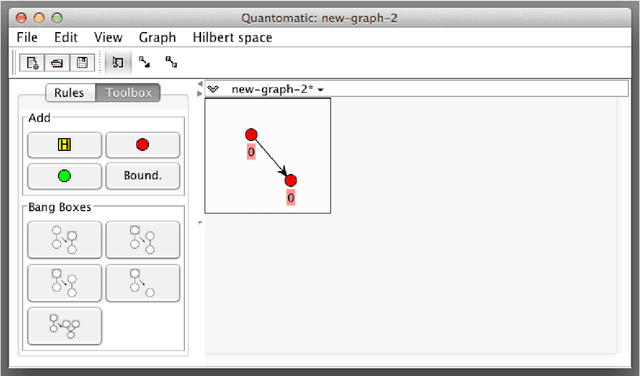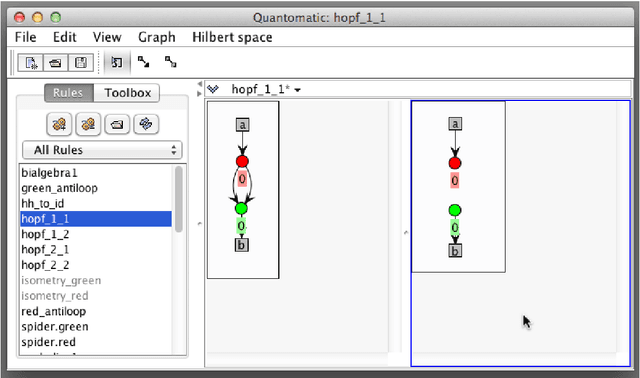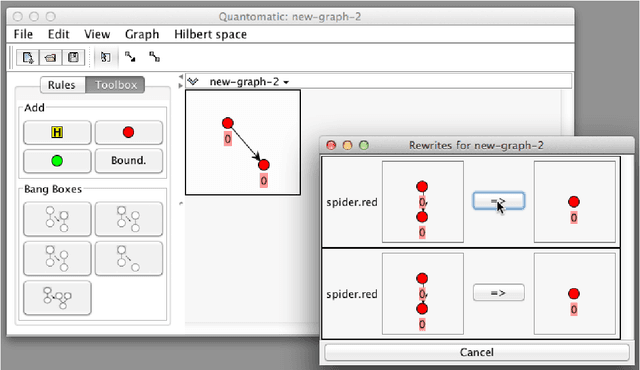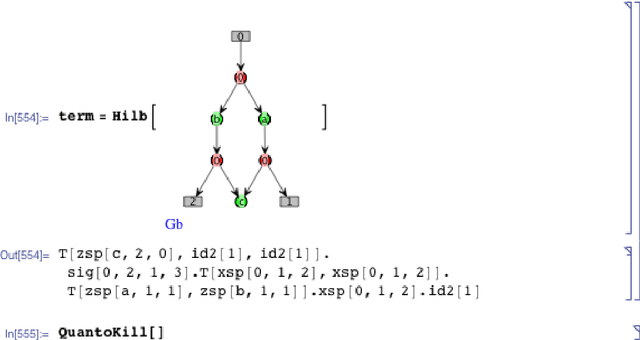Pictures of Processes: Automated Graph Rewriting for Monoidal Categories and Applications to Quantum Computing
Paper and Code
Mar 22, 2012



This work is about diagrammatic languages, how they can be represented, and what they in turn can be used to represent. More specifically, it focuses on representations and applications of string diagrams. String diagrams are used to represent a collection of processes, depicted as "boxes" with multiple (typed) inputs and outputs, depicted as "wires". If we allow plugging input and output wires together, we can intuitively represent complex compositions of processes, formalised as morphisms in a monoidal category. [...] The first major contribution of this dissertation is the introduction of a discretised version of a string diagram called a string graph. String graphs form a partial adhesive category, so they can be manipulated using double-pushout graph rewriting. Furthermore, we show how string graphs modulo a rewrite system can be used to construct free symmetric traced and compact closed categories on a monoidal signature. The second contribution is in the application of graphical languages to quantum information theory. We use a mixture of diagrammatic and algebraic techniques to prove a new classification result for strongly complementary observables. [...] We also introduce a graphical language for multipartite entanglement and illustrate a simple graphical axiom that distinguishes the two maximally-entangled tripartite qubit states: GHZ and W. [...] The third contribution is a description of two software tools developed in part by the author to implement much of the theoretical content described here. The first tool is Quantomatic, a desktop application for building string graphs and graphical theories, as well as performing automated graph rewriting visually. The second is QuantoCoSy, which performs fully automated, model-driven theory creation using a procedure called conjecture synthesis.
 Add to Chrome
Add to Chrome Add to Firefox
Add to Firefox Add to Edge
Add to Edge